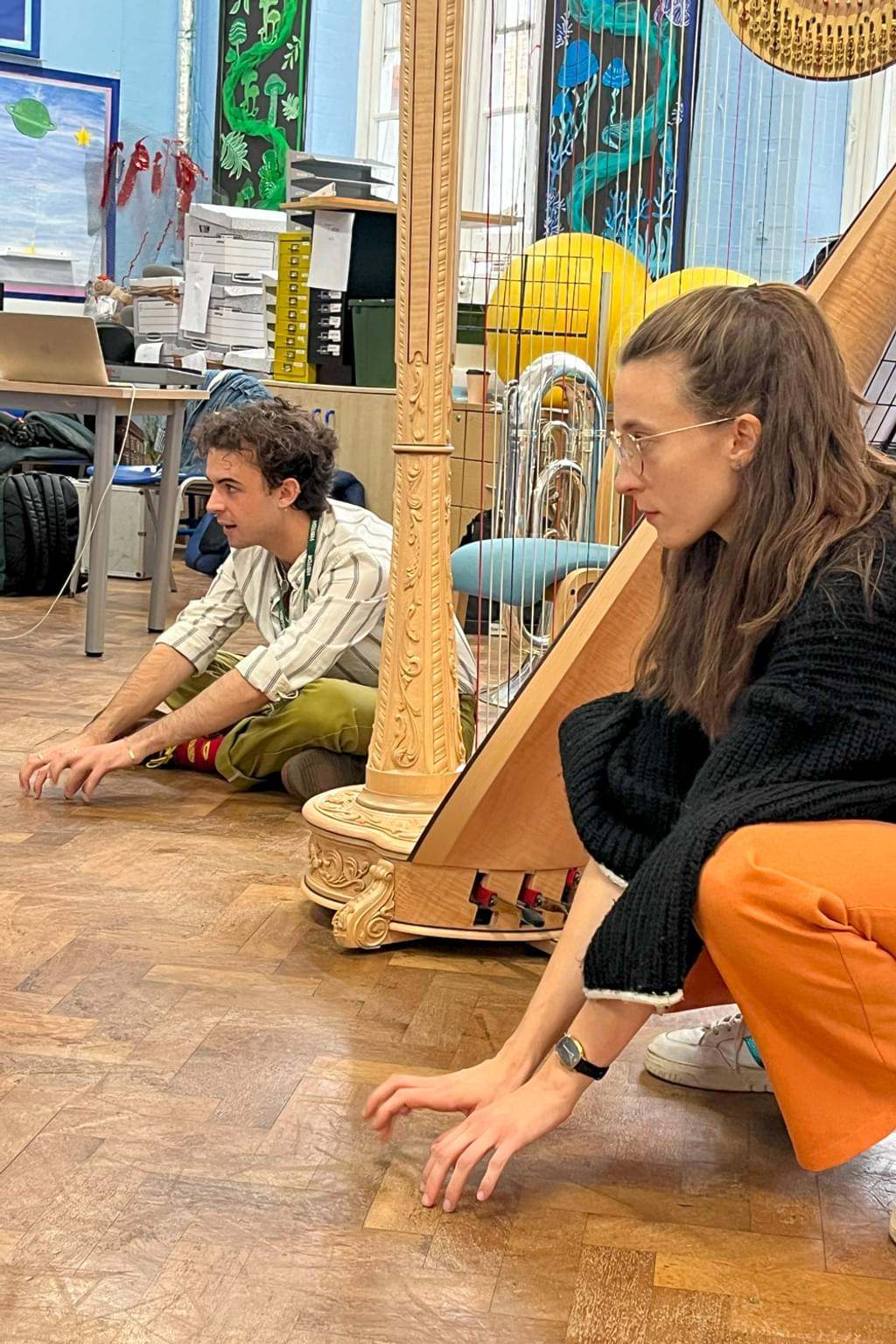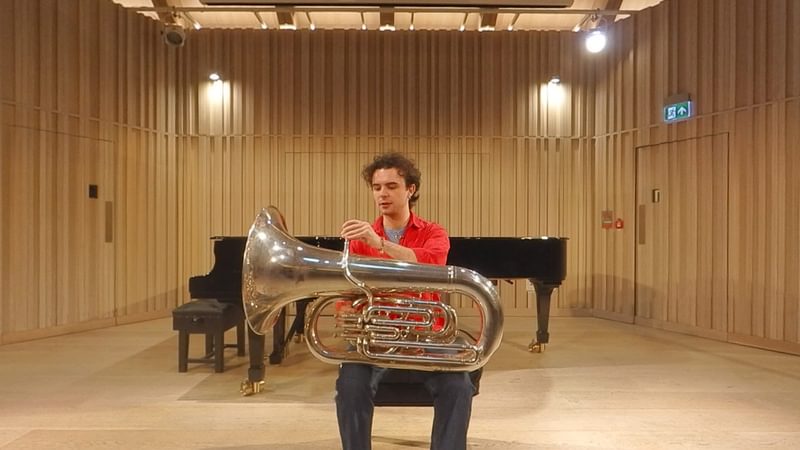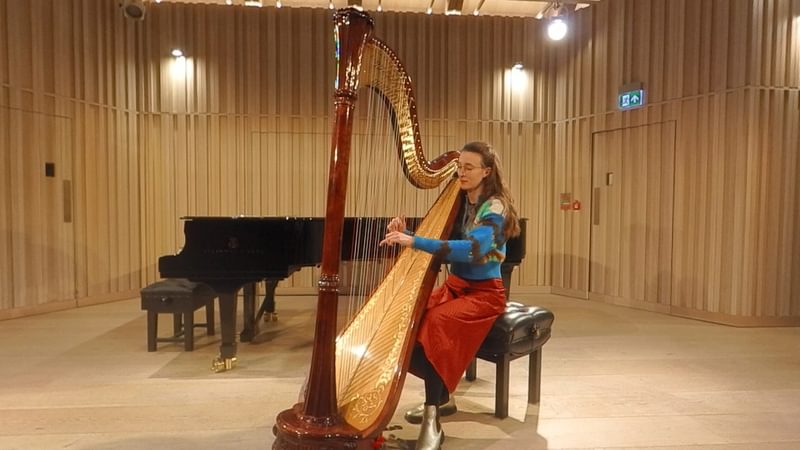These instrument introductions are standard practice in many community music settings, but for those who grew up surrounded by music, it can be difficult to understand their importance. ‘Because performance is such a big part of our lives,’ said tubist and OA Fellow Callum Davis, ‘we underestimate how many people haven’t seen these things before.’
In addition to providing foundational awareness, instrument introductions can broaden existing knowledge and generate excitement through trivia and demonstrations. ‘It’s good to challenge the stereotypes by showing other things that the instrument can do,’ said harpist and OA Fellow Anna Phillips. Her introduction balances lesser-known facts – like that harps have pedals – with showcases of devilish extended techniques. But the Fellows agree that it’s important to read the room. ‘It’s about being mindful of when [the audience] wants to learn about the instrument,’ said Anna, ‘but also that they probably just want to hear it.’ The young crowd responded to Callum’s demonstration of the tuba’s surprising high range with a clamour of ‘play your lowest note!’ The subsequent blast elicited bulging eyes and gaping mouths from across the gymnasium.
Open Academy Fellow Callum Davis introduces the tuba
Presenters need to be aware of their audiences and adjust accordingly. As well as being unfamiliar with the tuba or harp, a group of primary schoolers might misunderstand technical terms: from ‘glissando’, to ‘harmony’, to something as seemingly self-explanatory as ‘string’. ‘If I said “buzz” or “valves”,’ said Callum, ‘it’s so obvious that the word is “buzz” because it sounds like a buzz. But that’s only because I’ve been hearing it for fifteen years. Some people might hear the word “string” and associate it only with a ball of string.'
The Fellows succeed in reaching audiences by overcoming their inhibitions – a skill that they credit to years of working with young people. Through embracing unusual ideas and ‘leav[ing] your musical ego at the door,’ they learned how to uncover and dive into new creative spaces. ‘One of my first projects with primary school children was to create a track to go along with the book Supertato, which is about a superhero potato and an evil pea,’ said Anna. ‘Children have no judgement on their imaginations... they are open to a world where a superhero potato exists.’
Open Academy Fellow Anna Phillips introduces the harp
Anna found it liberating to view herself from the opposing point of view and not worry about making mistakes. ‘When you’re asked to create a motif that sounds like an evil pea,’ she said, ‘if you do it with conviction it’s going to be received. Anything you do in that moment will be valid.’ Callum agreed, citing experiences of not understanding the purpose of an activity, only to be met with rapt engagement upon bringing it to a class. ‘If you make space for it and allow yourself to feel comfortable,’ they added, ‘things happen at such a high level that if you were being snobby you might gloss over it.’
Open Academy offers musical opportunities to disadvantaged groups, but workshop leaders are still challenged to reach participants on a deeper level. ‘So many think that classical music is for posh people,’ said Callum. But the root of that belief, he argues, is a history of class separation that has unfairly cut entire socioeconomic groups off from the genre. ‘At the end of the day,’ they said, ‘most of the classical musicians that I know have an art form that they love and want to share with everyone.'


